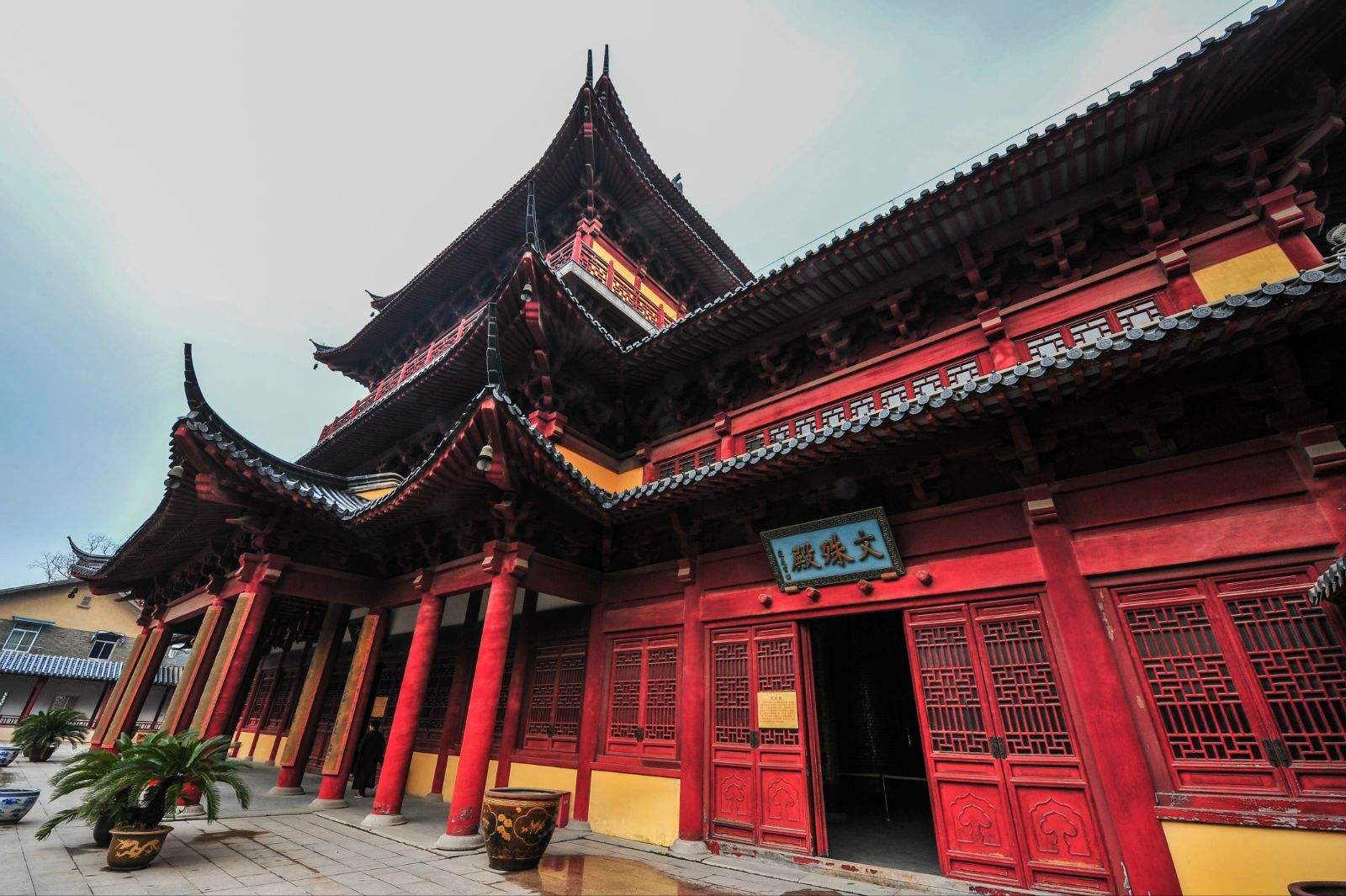Pilu mural restoration project kicks off

Pilu Temple in Hebei Province initiated the mural restoration project to revive the vitality of the time-honored murals.
At the beginning of April, restoration began on a set of murals at Pilu Temple in Shijiazhuang City, Hebei Province, known collectively as one of the four major ancient Chinese murals.
Experts from the Dunhuang Research Academy (DRA) gathered at Pilu Temple to repair damaged murals in its inner sanctum area. The murals have long been neglected and are in a state of disrepair, and it is urgent to launch a restoration project. Through modern technologies, digital methods and other retrieval and preservation measures, restorers are attempting to ensure the ancient murals in Pilu Temple are restored to greatness.
Mural restoration
Pilu Temple, 15 kilometers from downtown Shijiazhuang, was established in the Tianbao period of the Tang Dynasty. It is a major historical and cultural relic site under national protection. The total area of the painted murals in the temple is more than 200 square meters. Along with the Dunhuang Mogao Grottoes, the murals at the Pilu Temple have a reputation for their artistic importance. Due to years of degradation, the Pilu Temple murals have been fading and decaying.
Through investigations, analyses and initial tests for two years, the proposal formulated by the DRA to repair the Pilu Temple murals was approved by the Hebei Cultural Relics Bureau at the end of last year. In March, experts from the Chinese Academy of Social Sciences, National Museum of China and the Chinese Academy of Cultural Heritage conducted on-site surveys and confirmed the significance of initial tests and their advanced protective measures, which will contribute to effectively restoring the murals.
On April 5, the project kicked off. Due to the complicated structure of the murals, it is estimated that the completion of the whole restoration project will take one year.
Tough project
Wang Xinglong, an expert on mural restoration of the Technical Service Center of Cultural Relics Preservation of the DRA, indicated that the Pilu Temple murals will be much more difficult to repair than ordinary murals. The Pilu Temple murals are not simple plane paintings, and have a three-dimensional structure. “This is quite rare and it needs restorers to have experienced hands to precisely repair the murals through their flexible fingers,” Wang said. He added that the project has been underway for more than one month and approximately 15 square meters of murals have been completed.
The restoration proposal listed precise standards for each step of the technical procedures. For example, restorers should observe the extent of damage before they start to remove dust, and use a soft hairbrush to clean it up by gently sticking and carefully picking out all tiny dust particles. Wang elaborated that all restorers seem like they are walking on needles. One false move may cause direct and irreparable damage to the murals.
Digital protection
Last December, the Pilu Temple Museum accomplished the digital preservation project, so the restoration project will not affect tours to such a significant extent, as visitors can view digital copies of the murals. This project will also aid in storing images of the murals.
The temple museum invited the digital team of the DRA to make digital murals of the same size and precisely revealed the original appearance of the murals. Now, the temple museum utilizes database resources to design a multimedia system so that visitors can enjoy the beautiful murals via modern technologies.
Zheng Jianfei, the director of the temple museum, said that the natural murals can be affected by the environment, climate and temperature, but that digital technology can better preserve the murals.
The murals inherited the painting style of Wu Daozi, a distinguished painter in the Tang Dynasty, and both shapes and colors revealed the artisans’ superb skills. Zheng indicated that the murals are significant resources for scholars to study ancient social customs, religions and the development history of Chinese art.
